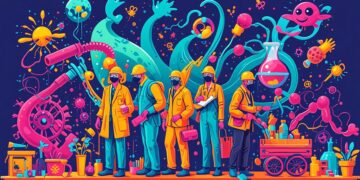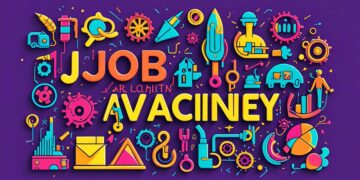
Impact of Job Openings on the Economic Recovery of the USA
Job openings have emerged as a critical indicator of the USA's economic recovery post-COVID-19. With over 10 million available positions, sectors like technology and healthcare drive demand. However, disparities in workforce participation and skills highlight challenges ahead, emphasizing the need for strategic policies to boost economic growth and resilience.

The Impact of the Gig Economy on Traditional Job Openings: A New Perspective on Work
The rise of the gig economy is transforming traditional job openings, offering increased flexibility and diverse opportunities for workers. As companies adapt to this new landscape, they face challenges in talent acquisition, job security, and employee engagement, necessitating a reevaluation of employment practices to attract both gig and traditional workers.

The Influence of Hybrid Work on Job Openings
The rise of hybrid work is reshaping job openings in the U.S., expanding talent pools beyond geographic limits, emphasizing tech and soft skills, and fostering inclusive company cultures. Candidates now enjoy greater flexibility and opportunities, while employers adapt to attract diverse talent in this evolving job market.

The Evolution of Job Vacancies During the Pandemic: What Changed?
The article explores how the COVID-19 pandemic transformed the job market, highlighting the surge in remote work opportunities, the emergence of skills-based hiring, and sector-specific dynamics. It emphasizes the need for adaptability among job seekers and employers in navigating this evolving landscape of job vacancies and workforce diversity.

Trends in Job Openings in Emerging Sectors and Their Implications for the Labor Market
The U.S. labor market is evolving with significant job openings in emerging sectors like green energy, healthcare technology, and tech startups. These trends demand new skill sets and create opportunities for job seekers, emphasizing the importance of adaptability and innovative training programs to meet future labor market needs.

The Impact of Artificial Intelligence on Job Openings: The Future of Work
The integration of artificial intelligence is transforming job openings and reshaping the future of work. While AI may displace certain roles, it also creates new job categories and enhances existing ones. Adapting through upskilling and embracing technology will be essential for the workforce's success in an evolving employment landscape.

The Role of Soft Skills in Job Openings: What Employers Are Looking For
In today's job market, employers prioritize soft skills alongside technical expertise. Skills like communication, teamwork, and emotional intelligence are essential for strong workplace dynamics and cultural fit. Candidates who cultivate these competencies enhance their career prospects and align effectively with employer expectations, increasing their chances of success.

Gender Inequality in Job Openings: Challenges and Solutions in the Labor Market
This article explores the pervasive challenges of gender inequality in job openings, highlighting factors like bias, wage gaps, and inadequate support policies. It emphasizes the need for comprehensive solutions, including mentorship programs and policy reforms, to create a more equitable labor market that fosters diversity and drives economic growth.

Job Vacancies in Emerging Sectors: Opportunities in Green Technology
The transition to a green economy is unlocking diverse job vacancies, particularly in sectors like renewable energy, sustainable agriculture, and energy efficiency. As demand for skilled professionals rises, opportunities in green technology are set to grow significantly, offering meaningful careers that support sustainability and environmental protection.

The Future of Job Openings in Emerging Sectors: Opportunities and Challenges
The evolving job market presents significant opportunities in emerging sectors like green technology, cybersecurity, and artificial intelligence, promising new openings. However, challenges include skills gaps and job displacement due to automation. A collaborative approach among educators, businesses, and policymakers is vital for workforce readiness in this dynamic landscape.